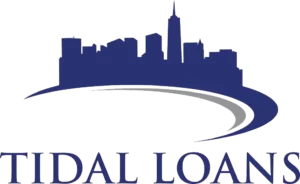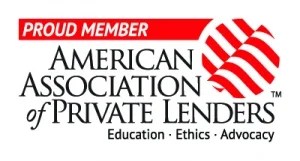Ever felt like getting a commercial property loan is harder than a home mortgage? It’s true. The world of commercial real estate financing is full of new terms and high stakes. But, knowing the right info can make it easier.
Commercial real estate loans are for business properties like offices and hotels. They have shorter terms and higher interest rates than home loans. You’ll need to put down 20% to 40% of the purchase price. The application and approval processes can be complex.
There are many places to get these loans, like banks and private investors. The U.S. Small Business Administration also offers the 504 Loan program. Knowing the differences between these options is key.
Looking into hard money loans can offer quick funding. Learn more about how hard money loans and if they fit your business needs.
Key Takeaways
- Understanding the specific requirements for commercial property loans can save time and effort.
- Different sources of financing include banks, private investors, and government programs.
- Commercial loans usually have shorter terms and higher interest rates than residential mortgages.
- Down payment requirements for commercial real estate financing can be as high as 40%.
- Exploring specific loan types, such as hard money loans, can offer quick funding solutions without hidden fees.
Understanding Commercial Real Estate Loans
Getting a commercial real estate loan is key for buying, building, or refinancing business properties. These loans are made for properties that make money, like office buildings and rental apartments. They usually last five to 20 years, with loan-to-value ratios from 65% to 85% and higher interest rates.
Difference between Commercial and Residential Loans
Commercial and residential loans are different in terms and purpose. Residential mortgages are often 30-year fixed-rate loans with LTVs up to 100% for USDA or VA loans. But commercial loans rarely go above 65% to 80% LTV. This ensures commercial properties have enough equity to repay the loans.
Commercial loans also look closely at the property’s income potential. They require a debt-service coverage ratio (DSCR) of at least 1.25. Residential loans, on the other hand, focus more on the borrower’s credit and financial history. Commercial loans also have higher fees and may need personal guarantees if the borrowing entity lacks credit history.
How Commercial Loans Work
Commercial loans use the property’s income and value, not the borrower’s credit. When getting commercial construction loans, the property’s future income is key. Lenders check the property type, tenant quality, and market conditions.
Loan terms vary widely in commercial settings. For example, SBA 7(a) loans can go up to $5 million with terms up to 25 years. Conduit loans offer terms from five to 10 years with a 30-year amortization. Commercial loans often require down payments of 20% to 45%, based on the lender’s risk and the borrower’s credit.
Closing a commercial loan means dealing with prepayment penalties, interest guarantees, and lockout periods. While residential loans focus on quick processing, commercial loans need detailed evaluations to ensure the property is a good investment.
Types of Commercial Real Estate Loans
When you invest in commercial real estate, knowing your financing options is key. Each loan fits different financial needs and strategies. Let’s look at the main types of commercial real estate loans.
Conventional Loans
Conventional loans come from banks and credit unions without government backing. They usually need a 20% down payment or more. Loans are about $1 million, and terms range from 5 to 30 years.
Commercial Bridge Loans
Commercial bridge loans are short-term solutions. They fill the gap between immediate needs and long-term financing. These loans last 6-12 months, with rates 50 to 200 basis points higher than usual.
SBA Loans
SBA commercial real estate loans are backed by the Small Business Administration. They’re great for businesses that occupy the property. For example, SBA 7(a) loans fund up to $5 million over 10-25 years. SBA 504 loans also fund up to $5 million, with 20-year terms and 3.5% to 5% interest rates.
Hard Money Loans
Hard money loans are private funding for quick cash needs. They’re used when traditional loans aren’t available. These loans finance up to 70% of the property’s value. Rates are 10% to 20%, and funds can be released in a week.
Conduit Loans
Conduit loans are for income-producing properties. They offer a non-recourse option. Loans range from $1 million to $3 million, and up to $50 million. Terms are 5 to 10 years, making them good for big investments.
How to Get a Commercial Property Loan
Getting a commercial property loan is a detailed process. It starts long before you apply for the loan. It’s crucial to be thorough and meet all requirements and expectations.
Assessing Your Financial Situation
First, check your financial health. Look at your business’s finances, credit scores, and debts. Lenders want a good credit score and solid finances.
Researching Lenders
Then, research different lenders. Compare their rates, terms, and conditions. Find one that fits your financial situation and goals.
Preparing Documentation
Next, gather all needed documents. You’ll need financial statements, tax returns, a business plan, and property details.
Application Process
With your documents ready, start the application. Show the lender why the property is a good investment and why you’re financially stable. This may include property valuation and due diligence.
Approval and Closing
If the lender approves, you’ll get a credit check and property value analysis. After approval, you’ll sign agreements and close the loan.
By following these steps and meeting requirements, getting a commercial property loan can be smooth and successful.
Commercial Loan Requirements
Getting a commercial real estate loan means meeting certain commercial loan qualifications. Lenders look closely at your financial health. They want to see steady income and a debt-to-income ratio of 75% or less.
They also check your credit score, aiming for 660 or higher. Your credit history and assets are under the microscope. Past financial troubles can hurt your chances.
For business mortgage application criteria, you’ll need to provide detailed financial plans. This shows you understand the property’s value. A good loan-to-value ratio is key to a strong application.
Commercial loans often require a 25% down payment. This affects the loan term, which can be up to 25 years. But, terms usually last between five to ten years. Lenders want a debt-service coverage ratio of 1.25 to ensure you can pay back the loan.
Small businesses face higher risks, so offering more collateral can help. Loans are available for many property types, including offices and hotels.
Interest rates start at 6.9%, and loan terms vary. Each loan has its own rules for collateral and underwriting. Knowing these commercial loan qualifications and business mortgage application criteria helps you prepare a strong loan application.
Commercial Mortgage Rates: What to Expect
Understanding commercial mortgage rates is key for those in commercial real estate finance. These rates affect the cost and feasibility of a loan. We’ll explore what influences these rates, current market trends, and how to get the best rates.
Factors Influencing Rates
Several factors affect commercial mortgage rates. The loan-to-value (LTV) ratio is a big one, with loans often covering up to 85% of the LTV. Borrower’s credit history and the property’s income are also important. Loan terms can vary from 5 to 30 years, with rates between 5% and 7% for bank loans.
However, hard money loans and soft money lenders have higher rates, from 8% to 18%, and shorter terms.
Current Market Insights
The commercial mortgage market is always changing. For example, the 10-year Treasury rate is now at 4.011%, affecting long-term rates. Rates have risen in 2024, partly due to the 10-year treasury increase from 3.86% to 4.50% by mid-April.
This rise is linked to economic trends, like the Fed’s rate cuts and the prime rate’s increase to 8.5%, its highest in over 20 years.
Tips for Getting the Best Rates
To get the best rates, you need a smart strategy. Here are some tips:
- Maintain a Strong Credit Profile: A good credit history can help you get better terms.
- Mind the LTV Ratio: A lower LTV ratio can lead to better rates.
- Stay Informed: Keep up with market trends to time your application well.
- Negotiate Terms: Look for minimal loan fees and favorable repayment terms based on your credit.
By grasping the dynamics of commercial mortgage rates and using these strategies, you can better navigate real estate finance rates. This way, you can secure more favorable terms for your commercial property loan.
Comparing Commercial Property Lenders
Choosing the right real estate investment lenders is crucial. You need to do a detailed commercial mortgage lender comparison. This ensures you get the best terms for your investment.
Let’s talk about interest rates. Commercial property loan rates vary a lot. For example:
- Lendio: Rates vary among its over 75 lenders.
- RCN Capital: Offers some of the lowest starting rates.
- 1West: Starts at 6%.
- Lima One Capital: Rates range from 8% to 11%.
These rates greatly impact your loan’s cost. So, it’s key to compare them across different lenders.
Loan terms are also important in a commercial mortgage lender comparison. For example:
- Lendio: Offers flexible repayment terms for businesses.
- RCN Capital: Has long repayment terms for easier monthly payments.
- 1West: Offers terms from 6 months to 5 years.
- Lima One Capital: Provides terms from 24 to 36 months.
Knowing the loan term variations helps match them with your business’s needs.
Maximum Loan-to-Value (LTV) ratios also differ. They can be key for those wanting to use more of their property’s value. For example, 1West and Lima One Capital both offer up to 80% LTV. This can be appealing for businesses looking to leverage more.
It’s also vital to look at annual revenue and credit score needs. For instance:
- 1West: Offers flexible annual revenue and credit score requirements as low as 500.
- Lendio: Has different requirements for different loan programs.
- U.S. Bank: As an SBA Preferred Lender, may speed up loan approval.
Other big lenders like JPMorgan Chase are also worth considering. They cater to experienced investors and offer large loans for those with strong credit and finances.
Highlighting the importance of comparing commercial mortgage lenders, it’s crucial to weigh interest rates, loan terms, LTV ratios, and eligibility. This ensures you find a loan that fits your investment strategy. Thorough research and strategic comparisons will help you make a smart choice. This will support your financial success in commercial real estate.
Understanding Loan-to-Value Ratios (LTV)
The loan-to-value ratio (LTV) shows how much of a property’s value can be loaned. In commercial lending, LTV is key. A lower LTV means more equity, which lenders see as safer.
What is LTV
LTV is found by dividing the loan amount by the property’s value or price. For instance, a $400,000 loan on a $500,000 property is an 80% LTV. Commercial loans usually have LTVs from 65% to 80%, with some up to 90%.
“Loan to value (LTV) ratio is calculated by dividing the loan balance by the property value.”
LTV affects loan risk and terms. Higher LTVs mean higher interest rates and less favorable terms because of the risk.
Importance of LTV in Commercial Loans
LTV is crucial in commercial loans. Lower LTVs mean more equity, leading to better rates and terms. For example, multifamily housing often has a 73% LTV, with conventional lenders maxing out at 80%.
Offices, industrial properties, and self-storage usually have around 68% LTV. Special federal programs like HUD/FHA 223(f) offer up to 90% LTV. Also, commercial lending LTV can be stricter, with private loans only at 65%-70%.
With the LTV formula, borrowers can figure out the max property value or down payment needed. LTV ratios are a big risk indicator, shaping loan terms, rates, and viability.
Role of Debt-Service Coverage Ratio (DSCR)
The Debt-Service Coverage Ratio (DSCR) is key to checking if a property can handle its debt. It’s found by dividing the Net Operating Income (NOI) by the yearly debt service. This gives us a clear view of the property’s financial health.
Lenders usually want a DSCR of at least 1.25. This means the property’s income should be more than its debt by a good amount.
Definition of DSCR
DSCR shows how much cash flow a property has to meet its yearly debt payments. It’s calculated by dividing NOI by Total Debt Service. For example, a property with NOI of $450,000 and debt service of $250,000 has a DSCR of 1.8.
A DSCR over 1 means the property’s income is enough to cover its debt. This is why it’s important in loan viability analysis.
How Lenders Use DSCR
Lenders look at DSCR to see how risky a loan is. They like properties with a DSCR of at least 1.25. This shows the property can easily pay its debt.
If a DSCR is below 1, it means the property might not have enough income. In such cases, lenders might ask for more money set aside. For example, Griffin Funding might accept a DSCR as low as 0.75 but could ask for 12 months of reserves.
Improving Your DSCR
To become a more appealing borrower, you can work on improving your DSCR. Ways to do this include boosting rental income or cutting down on expenses. You can also try to get better loan terms.
Using digital banking can help you see your cash flow better. This can make your DSCR look better and strengthen your loan application.


